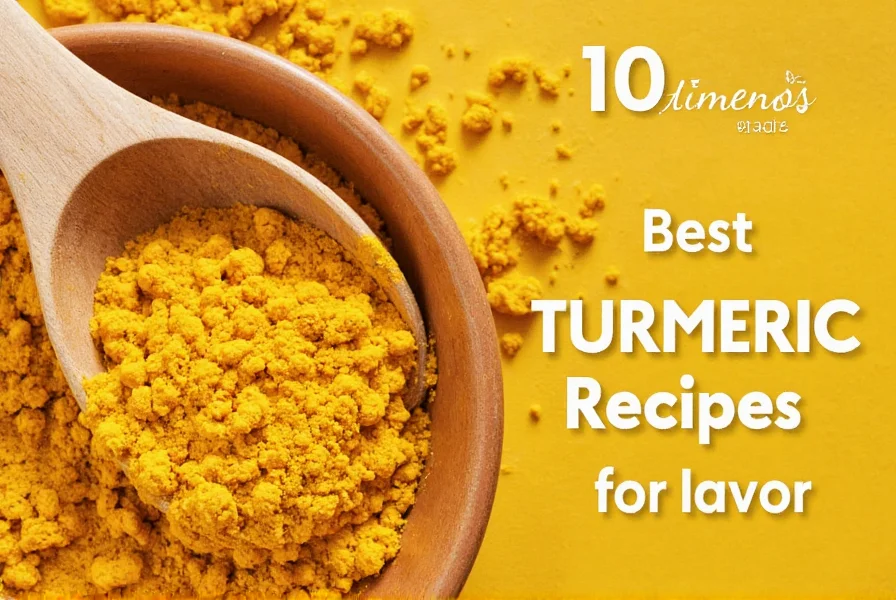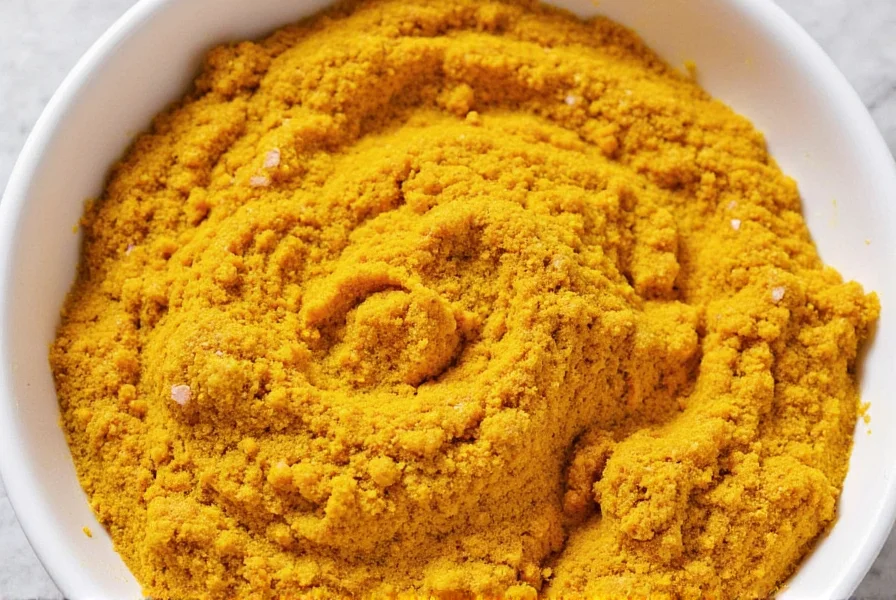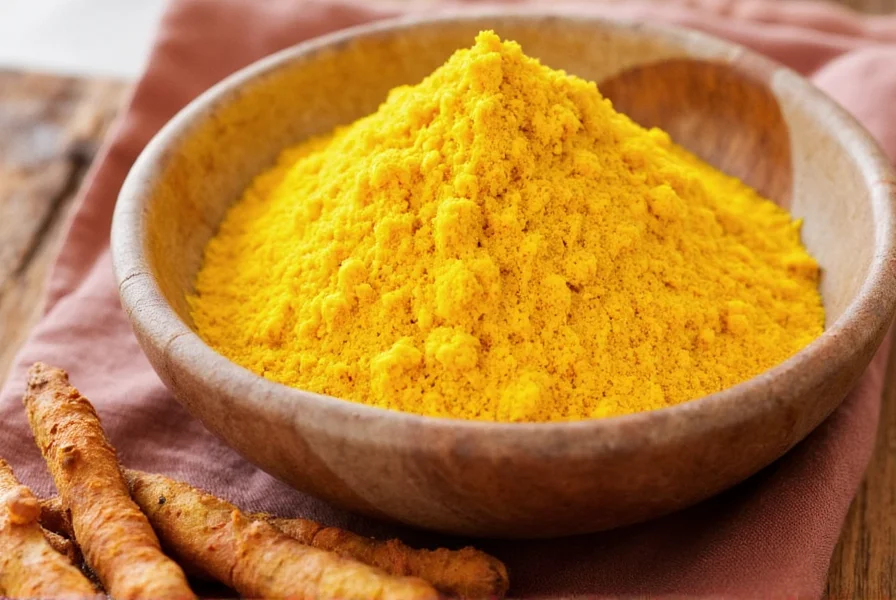Golden milk lattes and curry dishes dominate turmeric recipe collections, but this versatile spice shines in unexpected applications from scrambled eggs to roasted vegetables. When cooking with turmeric, remember that heat and fat increase curcumin bioavailability, while pairing with black pepper boosts absorption by up to 2,000%. These science-backed principles inform our carefully curated selection of practical, flavorful recipes that transform ordinary meals into wellness-enhancing experiences.
Why Turmeric Elevates Everyday Cooking
Turmeric's active compound curcumin provides potent anti-inflammatory effects, but its culinary value extends beyond health benefits. This golden spice adds earthy depth to dishes while creating visually stunning presentations. Unlike many health-focused ingredients that compromise taste, turmeric enhances flavor profiles when used thoughtfully. Professional chefs recommend starting with 1/4 teaspoon of ground turmeric per serving to avoid bitterness, gradually adjusting to personal preference.

Turmeric Cooking Fundamentals
Fresh turmeric root offers brighter flavor than dried powder, but both work well in recipes. When substituting, use 1 inch fresh turmeric (about 1 tablespoon grated) for every 1/2 teaspoon ground. Always cook turmeric with fat—olive oil, coconut milk, or avocado—and include black pepper for maximum health benefits. Acidic ingredients like lemon juice help balance turmeric's earthiness while preventing color bleeding in dishes.
Top Turmeric Recipes for Every Meal
These tested recipes demonstrate turmeric's versatility across meal types. Each includes precise measurements and timing to prevent common issues like staining or bitterness. We've prioritized dishes with balanced flavor profiles that showcase turmeric without overwhelming other ingredients.
| Recipe Type | Prep Time | Key Benefits | Special Tips |
|---|---|---|---|
| Golden Chickpea Scramble | 10 minutes | High protein, vegan-friendly | Add turmeric at end to preserve color |
| Turmeric Roasted Carrots | 15 minutes | Rich in antioxidants | Toss with lemon zest before serving |
| Anti-Inflammatory Smoothie | 5 minutes | Quick absorption | Include 1/8 tsp black pepper |
| Coconut Turmeric Lentil Soup | 35 minutes | Complete protein | Simmer 20+ minutes for depth |
Golden Chickpea Scramble Recipe
This vegan breakfast option demonstrates how turmeric enhances plant-based proteins. Whisk 1 can drained chickpeas with 1/4 tsp turmeric, 1/8 tsp black pepper, and 2 tbsp nutritional yeast. Sauté with onions and spinach until heated through. The chickpeas' texture mimics scrambled eggs while turmeric provides the characteristic golden color without egg ingredients. Serve with avocado slices to increase curcumin absorption through healthy fats.

Avoiding Common Turmeric Cooking Mistakes
Many home cooks encounter issues with turmeric recipes due to improper handling. To prevent yellow stains on cutting boards and utensils, rub surfaces with lemon juice immediately after use. When measuring ground turmeric, use a dedicated spoon to avoid cross-contamination with other spices. For vibrant color without bitterness, add turmeric during the last 5-10 minutes of cooking for most dishes—except soups and stews where longer simmering develops flavor depth.
Seasonal Turmeric Recipe Adaptations
Adjust your turmeric usage based on seasonal ingredients. In summer, incorporate fresh turmeric into cold soups and salad dressings using citrus-based emulsions. During winter, increase turmeric quantities slightly in hearty stews as colder temperatures can dull flavor perception. Spring recipes benefit from pairing turmeric with asparagus and peas, while fall dishes shine when combined with squash and apples. These seasonal adaptations for turmeric-based dishes ensure optimal flavor balance throughout the year.
Frequently Asked Questions
Does cooking destroy turmeric's health benefits?
No, proper cooking actually enhances turmeric's benefits. Heating turmeric in oil increases curcumin bioavailability by up to 300%, while combining with black pepper boosts absorption dramatically. Avoid boiling turmeric for extended periods, as this can degrade some compounds.
How can I prevent turmeric from staining my hands and surfaces?
Wear disposable gloves when handling fresh turmeric. For surfaces, immediately clean with lemon juice or vinegar before washing. For hands, rub with lemon juice or use a paste of baking soda and water. Stainless steel sinks resist staining better than porcelain.
What's the difference between fresh and ground turmeric in recipes?
Fresh turmeric offers brighter, more complex flavor with citrus notes, while ground provides consistent earthiness. Use 1 inch fresh turmeric (about 1 tablespoon grated) for every 1/2 teaspoon ground. Fresh works better in raw applications like smoothies, while ground excels in cooked dishes.
Can I use turmeric in sweet recipes?
Yes, turmeric complements sweet applications beautifully. Try adding 1/8 teaspoon to mango smoothies, golden milk lattes, or banana bread. Pair with complementary flavors like coconut, ginger, cinnamon, and citrus. Start with small amounts as turmeric's earthiness can overwhelm sweet dishes if overused.
How should I store turmeric to maintain freshness?
Store ground turmeric in an airtight container away from light and heat, where it maintains potency for 6-12 months. Fresh turmeric root keeps for 2-3 weeks refrigerated in a paper bag. For longer storage, freeze peeled turmeric root in an airtight container for up to 6 months without significant quality loss.











 浙公网安备
33010002000092号
浙公网安备
33010002000092号 浙B2-20120091-4
浙B2-20120091-4